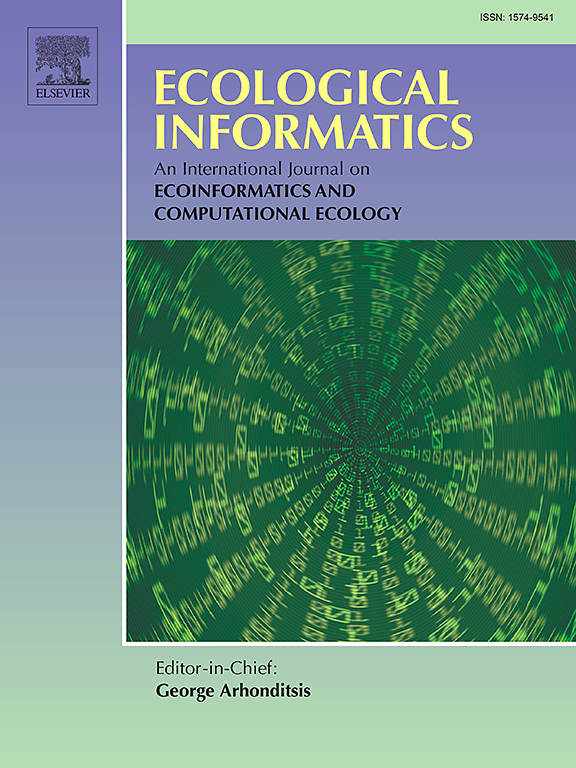High-resolution mapping of peatland CO2 fluxes using drone multispectral images
IF 5.8
2区 环境科学与生态学
Q1 ECOLOGY
引用次数: 0
Abstract
Large-scale mapping of ecosystem CO2 fluxes between land and atmosphere is a challenging task. Typically, it is based on multispectral satellite images with low (∼250 m) to moderate ground pixel resolution (∼20 m). However, in small, fine-scale ecosystems such as peatlands, the representation of CO2 fluxes heterogeneity across microhabitats is very limited by the ground pixel resolution of satellites. In this context, high ground pixel resolution of drone imagery might prove useful, alone or in synergy with large-scale satellite data, to better support field investigations and carry out rapid carbon assessment at a relatively low cost. Here, we carried out a survey of CO2 exchanges over 4 ha of peatland during the growing season using chamber measurements, as well as simultaneous aerial multispectral orthophotographs acquired by drone. To assess the ability of drone multispectral images at providing relevant information for the prediction of CO2 fluxes, we developed robust linear regression models and used drone imagery to map net ecosystem exchange, ecosystem respiration and gross ecosystem productivity at a very fine scale (∼5 cm). Our predictions were in the range of those found in the satellite remote sensing literature with errors lesser than 0.5 gCO2.m−2.h−1. Our study offers new opportunities to refine large scale satellite assessment of CO2 fluxes on small, valuable peatland areas that can be easily flown over by drone. Moreover, we believe that our results will be of interest for the scientific community as well as environmental managers wishing to carry out rapid carbon assessments of peatlands.
求助全文
约1分钟内获得全文
求助全文
来源期刊

Ecological Informatics
环境科学-生态学
CiteScore
8.30
自引率
11.80%
发文量
346
审稿时长
46 days
期刊介绍:
The journal Ecological Informatics is devoted to the publication of high quality, peer-reviewed articles on all aspects of computational ecology, data science and biogeography. The scope of the journal takes into account the data-intensive nature of ecology, the growing capacity of information technology to access, harness and leverage complex data as well as the critical need for informing sustainable management in view of global environmental and climate change.
The nature of the journal is interdisciplinary at the crossover between ecology and informatics. It focuses on novel concepts and techniques for image- and genome-based monitoring and interpretation, sensor- and multimedia-based data acquisition, internet-based data archiving and sharing, data assimilation, modelling and prediction of ecological data.
 求助内容:
求助内容: 应助结果提醒方式:
应助结果提醒方式:


